Discussion:
The results of the present study show that the spider monkeys mastered all cognitive tasks presented to them. Though there was variation both in individual performance and in group performance across tasks the animals succeeded in object permanence, associative learning, quantity discrimination, numerosity with equally-sized dots, numerosity with various-sized dots, and long-term memory.
Experiment 1 - Object permanence
The relatively straight trendline of the group’s performance indicates that the animals required only minimal – if any – learning to master the task. Object permanence is thought, however, to require some sort of visual representation of objects as well as a working memory.
One theory for the evolution of object permanence suggests that it may have evolved according to specific foraging demands, where animals, namely primates which forage on patchily distributed foods, for example, evolved cognitive skills like object permanence to locate and identify food sources that are not directly perceptible.
It is also suggested that this ability to represent the unperceived movements of objects may have evolved in animals that are required to track moving prey, predators or conspecific group members. In this sense, there are only few differences to be found in primate species with regard to object permanence as most primate species require this skill, whether it be for tracking food sources, predator avoidance, or maintenance of group cohesion.
Therefore, object permanence would be an essential skill for spider monkeys given their strong dependence on patchily distributed food sources and fission-fusion social dynamics.
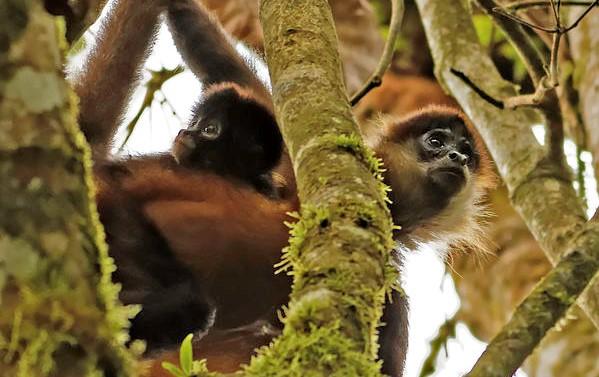
Experiment 2 - Associative learning
The significantly increasing trendline of the group’s performance indicates that the animals displayed an increase in performance across sessions and thus – as the term suggests – a learning process.
However, it is also suggested that associative learning might be mediated by other mental processes rather than a learning mechanism, such as memory or problem solving. Presuming that the spider monkeys resolved to their memory skills to master the associative learning task may actually be a potential explanation for the fact that the animals performed so well from the start of the experiment.
Indeed, most individuals reached the learning criterion right away, which could suggest that they remembered the color of their assigned cup from the object permanence task rather than learned to associate the color of the cup with the food reward. Though more so, these different processes might not necessarily be mutually exclusive but rather, associative learning may be mediated by a variety of cognitive processes.
Associative learning can play a fundamental role in animal behavior namely due to the fact that it allows animals to adapt to biologically significant events, like gaining information on the edibility and nutrition value of certain foods, while learning to avoid unpalatable or toxic ones.
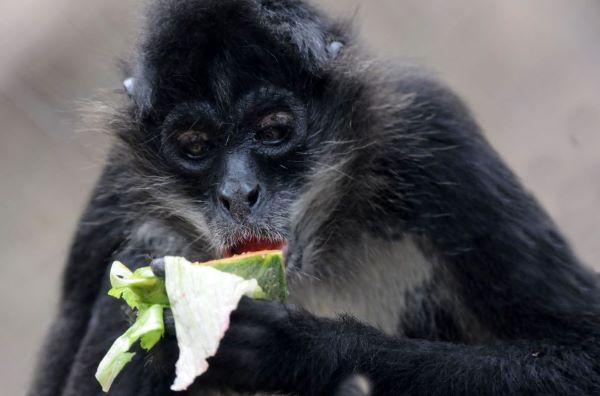
Experiment 3 - Quantity discrimination
Distinguishing between two quantitatively different sets of items refers to choosing one or the other set of items based on a “more-than” or “less-than” rule.
From an evolutionary point of view, being able to evaluate quantities of food, mates, competitors or predators would serve a critical survival function. Such a quantificational system allows to recognize and make appropriate decisions regarding relevant numerical information, such as, for example, ××× is better than × when it comes to food items, but worse when it comes to predators.
Other studies have also found that the accuracy in the performance of the animals decreases as the ratio between the numerical values in the two sets of stimuli approaches 1. These results are consistent with Weber’s law, which states that the successful discrimination of two stimuli along a certain continuum will depend on their ratio rather than their absolute values.
In other words, the closer in amount the quantities will be, the harder they will be to compare. From a foraging perspective, for instance, this concept is sensical as choosing a food patch with ten fruits instead of a food patch with two fruits will lead to a definite nutritional benefit, whereas being able to tell apart ten fruits from nine fruits will not result in a similar benefit since there will be less of a relative difference between the two options.
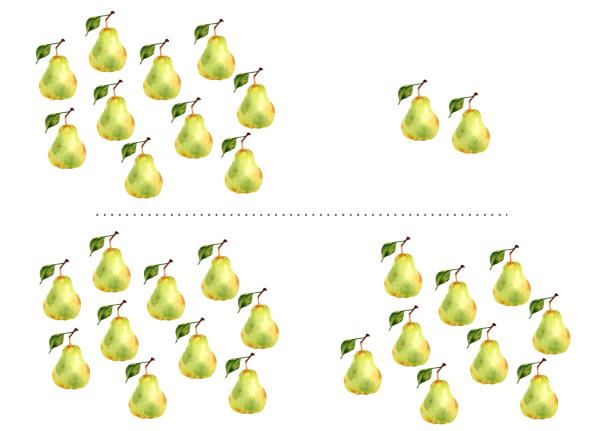
Experiment 4 - Numerosity with equally-sized dots
Distinguishing between two sets of discrete stimuli means being able to evaluate the number of given elements, independent of the amount, i.e. choosing one or the other set based on a “how many?” basis rather than a “how much?” basis. This can be tested by presenting the animals with two sets of abstract stimuli (e.g. dotted cards) which they will then be trained to associate with a reward. The animals’ capacity to learn a numerical rule is thus interpreted as evidence of their numerical abilities.
Training procedures involving so-called abstract stimuli will presumably give no insight into the practical application of numerical abilities in a natural setting, however the use of training procedures presents the advantage of preventing the animals’ performance to be affected by individual motivation and personal preference for the presented stimuli. Furthermore, the use of abstract stimuli such as dots allows for a meticulous manipulation of the latter such that a wide variety of stimuli can be presented within the same numerical contrast and prevent the animals to base their responses upon patterns instead of numerical properties. Abstract stimuli also allow researchers to use the same stimuli across species and thus permit precise intra- and inter-specific comparative studies.
Not unlike the phenomenon encountered in quantity discrimination tasks, Weber’s law is often observed in discrete number discrimination tasks, with accuracy in performance decreasing when minimizing the numerical interval between the stimuli. The animals’ performance in the present study is no exception to this rule.
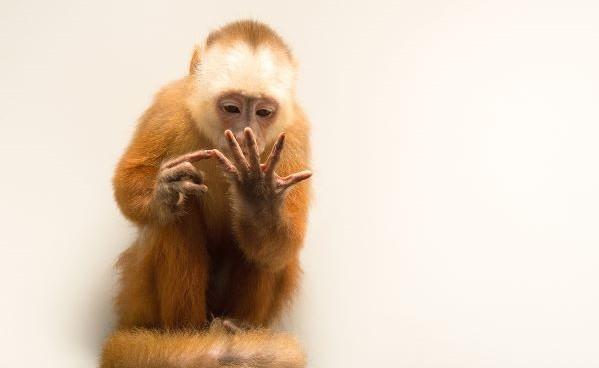
Experiment 5 - Numerosity with various-sized dots
Interestingly, while the average performance in the numerosity task with equally-sized dots increased from around 60% to 80% correct responses, the average performance in the numerosity task with various-sized dots already started between 70% and 80% and mostly remained in that range across the sessions.
This may indicate that the numerosity task with various-sized dots was interpreted by the monkeys to be similar and/or continuous to the numerosity task with equally-sized dots. Therefore, this suggests that the animals did in fact base their decision for one of two number cards on their numerical properties rather than on the size of the dots.
Weber’s law was observed here as well, which further refutes the possibility that the animals based their decision for one of the two options on the size of the dots or the patterns of the cards rather than on their numerical properties.
Essentially, the use of abstract, stimuli allows for detailed control of aspects such size, shape, color, density and ultimately permits to confidently dissociate between an animal’s quantity discrimination abilities and its discrete number discrimination abilities.
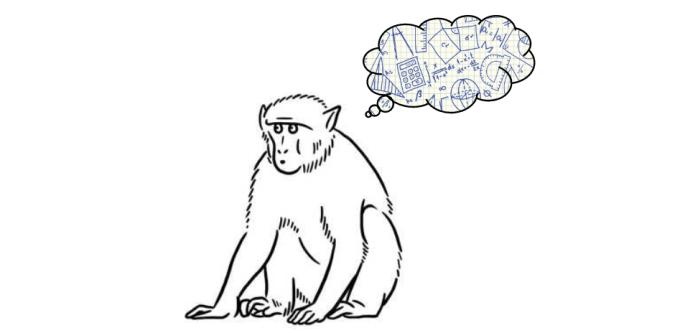
Experiment 6 - Long-term memory
As opposed to short-term memory, which refers to the ability to memorize few items over a relatively short period of time, long-term memory can be defined as a broad store of knowledge and a record of past events, providing a lasting retention of information and skills.
Remembering the apparatus and the task to be performed refers to recognition memory, a component of long-term memory, which requires both the identification of a stimulus and the judgement concerning its prior occurrence. In this case, for the monkeys to identify the material and situation, and reproduce a past behavior for a positive outcome, i.e. to select the correct cup color for a reward.
Naturally, recognition memory – and long-term memory in general – allows animals to store acquired information about the environment. For spider monkeys, long-term memory is likely to play a key role namely in foraging behaviors amidst seasonally changing environments. The frugivorous spider monkeys may recognize the visual characteristics of nutritious fruits and locally abundant trees, as well as memorize the location of trees and tree patches that have previously yielded high-quality foods.

Responsible for this page:
Director of undergraduate studies Biology
Last updated:
06/01/20
